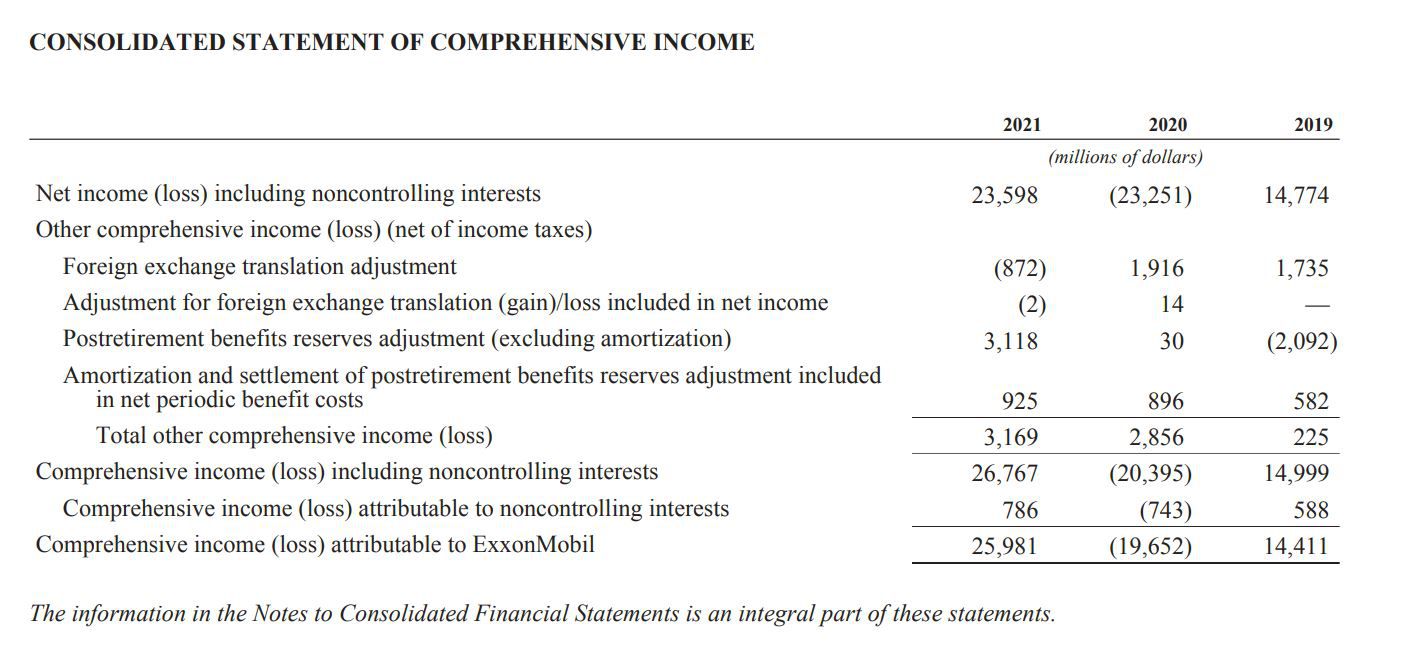

Finance
What Is An Aggregate In Insurance
Modified: February 21, 2024
Discover what an aggregate in insurance means and how it relates to the world of finance. Gain insights on financial aspects of insurance policies and their overall impact.
(Many of the links in this article redirect to a specific reviewed product. Your purchase of these products through affiliate links helps to generate commission for LiveWell, at no extra cost. Learn more)
Table of Contents
Introduction
In the world of insurance, there are various terms and concepts that policyholders and industry professionals must understand to navigate the complex landscape. One such term is “aggregate,” which holds significant importance in determining coverage limits and claims settlements.
An aggregate in insurance refers to the maximum amount of coverage available for a specific type of claim within a defined time frame. It represents the total limit that an insurance company will pay for all claims occurring during a policy period or a specific event. Understanding the concept of an aggregate is crucial for policyholders to assess their coverage needs accurately and for insurers to mitigate their potential risks.
Insurance policies typically include aggregate limits for different types of claims, such as general liability, professional liability, or product liability. These limits protect the insurance company from excessive payouts and help ensure that coverage remains viable for all policyholders.
The calculation and application of aggregates play a pivotal role in risk management and underwriting processes within the insurance industry. Insurers use mathematical formulas and statistical models to estimate potential losses, determine appropriate premiums, and establish aggregate limits that adequately protect both the insurer and the policyholder.
In this article, we will explore the definition, purpose, calculation, and importance of aggregates in insurance. We will also delve into examples of how aggregates work in different insurance contexts and discuss limitations and considerations associated with their use.
Definition of an Aggregate in Insurance
In insurance, an aggregate refers to the maximum amount of coverage available for a specific type of claim within a given time period or event. It represents the total limit that an insurance company will pay for all claims related to a specific coverage category.
The aggregate limit is set by the insurance policy and serves as a cap on the total amount payable for covered claims. For example, let’s say a policy has an aggregate limit of million for general liability claims. This means that the insurance company will not pay more than $1 million for all claims made under the general liability coverage during the policy period.
Aggregates are commonly used in various types of insurance, including general liability, professional liability, and product liability. Each coverage category typically has its own aggregate limit to ensure that claims are managed and coverage remains financially viable for both the insurer and the policyholder.
It is important to note that within the aggregate limit, there may be sub-limits or individual limits for specific claims. These sub-limits may apply to certain types of losses or damages, such as bodily injury, property damage, or legal fees. Sub-limits help further define the extent of coverage for different claim scenarios.
The aggregate limit can be applied on either a per-claim basis or an aggregate basis. Under a per-claim basis, the aggregate limit represents the maximum amount payable for each individual claim. In contrast, under an aggregate basis, the limit applies to the total amount payable for all claims within the specified time period.
Understanding the aggregate limit is crucial for policyholders to assess their insurance needs accurately and for insurers to manage their potential risks. It helps ensure that coverage remains affordable and sustainable for both parties.
Now that we have defined what an aggregate is in insurance, let’s explore its purpose and significance in the next section.
Purpose of an Aggregate in Insurance
The aggregate limit in insurance serves multiple purposes and plays a vital role in managing risk for both policyholders and insurance companies. It helps to ensure the financial stability of insurance policies while balancing the needs of policyholders.
One of the primary purposes of an aggregate in insurance is to protect the insurer from excessive payouts. By setting a limit on the total amount payable for claims within a specific coverage category, insurers can manage their financial obligations and avoid potential bankruptcy or insolvency. This safeguard allows insurance companies to continue providing coverage to policyholders and maintain their overall stability.
Moreover, aggregates help policyholders assess their coverage needs accurately. Understanding the maximum amount that an insurance policy will pay for claims within a specific category enables policyholders to evaluate whether their coverage is sufficient or if additional coverage is necessary in certain areas.
The aggregate limit also encourages policyholders to exercise caution and take appropriate risk mitigation measures. By knowing that their coverage has a limit, policyholders are motivated to implement safety protocols and protocols to reduce the frequency and severity of potential claims. This proactive approach to risk management can result in fewer claims, lower insurance premiums, and overall cost savings for both the policyholder and the insurance company.
Additionally, aggregates provide insurers with a means to calculate premiums accurately. By assessing the potential risks associated with a specific coverage category and considering the aggregate limit, insurers can determine appropriate premium amounts that reflect the level of coverage provided.
For policyholders, the aggregate limit helps manage expectations regarding claims settlements. It provides transparency and clarity on the maximum amount that can be paid out in the event of a covered claim. This information empowers policyholders to make informed decisions and take necessary steps to protect their financial interests.
Overall, the purpose of an aggregate in insurance is to establish a balance between providing adequate coverage for policyholders and managing risk for insurance companies. It serves as a mechanism to protect both parties and maintain the stability and longevity of insurance policies.
Now that we understand the purpose of aggregates in insurance, let’s explore how they are calculated in the next section.
Calculation of an Aggregate in Insurance
The calculation of an aggregate in insurance involves considering various factors, including past claims experience, risk assessments, and the desired level of coverage. Insurance companies employ mathematical models and statistical analysis to determine an appropriate aggregate limit for each coverage category.
One common method used to calculate aggregates is trend analysis. Insurance companies analyze historical data, looking at trends in claims frequency and severity over a specific time period. By examining trends, they can project the expected number and size of claims for a given coverage category. This information helps insurers determine a suitable aggregate limit that aligns with their risk tolerance.
Insurers also consider external factors such as industry standards and regulatory requirements when calculating aggregates. They may look at industry benchmarks and guidelines to ensure their aggregate limits are in line with industry norms and meet legal obligations.
Underwriters play a significant role in the calculation process. They assess the risk associated with the specific coverage category and evaluate the potential financial impact of claims. Underwriters use their expertise and actuarial principles to estimate the potential losses and determine the aggregate limit that adequately protects both the policyholder and the insurer.
It is important to note that the calculation of an aggregate can vary depending on the type of insurance and the specific policy. For example, in general liability insurance, the aggregate limit may apply over a policy period, usually one year. In contrast, in product liability insurance, the aggregate limit may apply per occurrence, regardless of the policy period. Understanding the specific calculation criteria in the insurance policy is crucial for policyholders to grasp the limits and coverage provided.
Insurance companies may also consider reinsurance in their aggregate calculations. Reinsurance is a risk management mechanism where insurers transfer a portion of their risk to other insurance companies. By obtaining reinsurance, insurers can increase their capacity to handle claims and potentially increase their aggregate limits.
The calculation of an aggregate in insurance involves a careful analysis of historical data, risk factors, and industry standards. Insurers strive to determine an appropriate limit that adequately protects both the policyholder and the insurer from excessive or catastrophic losses. By accurately calculating aggregates, insurance companies can offer relevant coverage and ensure the financial sustainability of their policies.
Now that we understand how aggregates are calculated, let’s explore their importance in insurance in the next section.
Importance of an Aggregate in Insurance
The concept of an aggregate in insurance holds immense importance for both policyholders and insurance companies. It serves as a crucial element in risk management, claims settlements, and ensuring the long-term viability of insurance policies.
One key importance of an aggregate in insurance is its role in managing risk for insurance companies. By setting a limit on the maximum amount payable for claims within a specific coverage category, insurers can control their exposure to potential losses. This helps maintain their financial stability and ability to provide coverage to policyholders.
Aggregates also play a vital role in claims settlements. When multiple claims are made within a policy period or a specific event, the aggregate limit determines the maximum amount that can be paid out. This provides a clear framework for claims adjusters and policyholders, ensuring transparency and fairness in the claims process.
Furthermore, aggregates provide policyholders with clarity on the extent of their coverage. Understanding the maximum amount that an insurance policy will pay for claims within a specific category allows policyholders to assess their coverage needs accurately. It enables them to make informed decisions, identify any potential coverage gaps, and take necessary steps to protect their financial interests.
Aggregates also serve as a benchmark for policyholders to evaluate their risk management practices. By knowing that their coverage has a limit, policyholders are motivated to implement safety protocols, risk mitigation strategies, and loss prevention measures. This proactive approach can lead to reduced claim frequency and severity, lower insurance premiums, and overall cost savings for both the policyholder and the insurance company.
Having an aggregate in insurance not only benefits policyholders and insurers but helps set industry standards and ensure the financial viability of insurance policies. It encourages insurers to accurately assess and price risks, leading to fair premiums that reflect the level of coverage provided. It also helps maintain a healthy insurance market by preventing excessive payouts and potential insolvencies.
While aggregates provide crucial protection, it is important to note that they have limitations and considerations that need to be understood. These will be discussed in detail in the next section. However, overall, the importance of an aggregate in insurance cannot be understated. It safeguards the interests of both policyholders and insurance companies, promotes risk management, and contributes to the overall stability of the insurance industry.
Now that we have explored the importance of aggregates, let’s move on to examining examples of aggregates in insurance.
Examples of Aggregates in Insurance
Aggregates are a fundamental concept in insurance and are utilized in various coverage categories. Understanding how aggregates work in different insurance contexts can provide insight into their practical application. Let’s explore a few examples:
1. General Liability Insurance: In general liability insurance, there is often an aggregate limit that applies to all claims made during the policy period. For instance, a policy may have a $2 million aggregate limit for general liability claims. This means that the insurer will pay a maximum of $2 million for all covered claims, regardless of the number of individual claims made.
2. Professional Liability Insurance: Professional liability insurance, also known as errors and omissions (E&O) insurance, is designed to protect professionals from claims arising from their professional services. This insurance typically includes an aggregate limit that applies to all claims made during the policy period. For example, a professional liability policy may have a $5 million aggregate limit. Once the total amount paid for covered claims reaches $5 million, the insurer will no longer be responsible for any further claims.
3. Product Liability Insurance: Product liability insurance covers claims related to injuries or damages caused by products sold by a business. Aggregates in product liability insurance can be structured differently than other types of insurance. Instead of applying over a policy period, the aggregate limit may be based on per occurrence. For instance, a policy might have a $10 million aggregate limit per occurrence. This means that the insurer will pay a maximum of $10 million for all claims arising from a single event or product defect.
4. Umbrella Liability Insurance: Umbrella insurance provides additional liability coverage beyond the limits of underlying policies. Aggregates in umbrella liability insurance often apply to multiple underlying policies and can be quite substantial. For instance, an umbrella policy may have an aggregate limit of $20 million, which extends coverage across various underlying general liability, auto liability, and employer’s liability policies.
These examples demonstrate how aggregates are utilized in different insurance categories to determine the maximum amount payable for claims. The specific terms and limits associated with aggregates can vary depending on the insurance policy and the insurer’s risk assessment.
Understanding these examples of aggregates can assist policyholders in evaluating their coverage needs and ensuring they have adequate protection. It also highlights the importance of policyholders familiarizing themselves with the specific terms and conditions outlined in their insurance policies.
Now that we have explored examples of aggregates in insurance, let’s move on to discussing the limitations and considerations associated with the use of aggregates.
Limitations and Considerations of Aggregates in Insurance
While aggregates play a crucial role in insurance, it is important to be aware of their limitations and consider certain factors when evaluating their effectiveness. Here are some key limitations and considerations to keep in mind:
1. Coverage Gaps: Aggregates may not provide coverage for certain types of claims or occurrences that fall outside the specified coverage category. It is important to carefully review the policy terms to identify any potential coverage gaps that may require additional coverage or endorsements.
2. Sub-limits: Within the aggregate limit, there may be sub-limits for specific types of losses or damages. These sub-limits can restrict the maximum amount payable for certain claim scenarios, requiring policyholders to closely assess the adequacy of coverage for each sub-limit.
3. Time Period Considerations: Aggregates typically have a defined time period, such as a policy year, during which claims must occur to be eligible for coverage. Policyholders should ensure they understand the time frame and potential impact on claims that occur before or after the defined period.
4. Claim Severity: Aggregates impose a limit on the total amount payable for covered claims. In the event of multiple large claims, the aggregate limit may be reached quickly, leaving limited coverage for subsequent claims. High-severity claims can exhaust the aggregate limit, potentially leaving policyholders exposed to additional liabilities.
5. Reinsurance Arrangements: Insurers may use reinsurance to increase their capacity to handle claims and potentially enhance their aggregate limits. It is important to consider the reinsurance structure and the financial stability of the reinsurer to understand the overall protection provided.
6. Policy Exclusions: Aggregates do not cover claims that fall under policy exclusions. Understanding the specific exclusions in the insurance policy is vital to identify potential gaps in coverage and mitigate risk accordingly.
7. Changing Risk Landscape: The risk landscape can change over time due to various factors, such as industry trends, regulatory changes, or emerging risks. Aggregates established in previous policy periods may not adequately reflect the current risk landscape, necessitating regular reassessment of coverage needs.
8. Policy Limits: Aggregates should align with the individual policy limits to ensure consistency. If the aggregate limit is significantly higher or lower than the policy limits, it can lead to potential coverage gaps or excess coverage that may not be required.
Policyholders and insurance professionals should carefully evaluate these limitations and considerations when assessing the effectiveness of aggregates. It is essential to review the insurance policy, seek advice from experts, and tailor coverage to individual needs accordingly.
Now that we have explored the limitations and considerations of aggregates, let’s conclude our discussion on the topic.
Conclusion
In conclusion, aggregates are a critical concept in insurance that determine the maximum amount of coverage available for a specific type of claim within a defined time period or event. They play a vital role in managing risk for insurance companies, ensuring fair claims settlements, and maintaining the long-term viability of insurance policies.
Throughout this article, we have discussed the definition of an aggregate in insurance and its purpose. We explored how aggregates are calculated and examined their importance in providing clarity on coverage limits, encouraging risk management practices, and establishing industry standards.
Examples of aggregates in various types of insurance, such as general liability, professional liability, product liability, and umbrella liability, illustrated the practical application of these limits. It is essential for policyholders to familiarize themselves with the specific terms and conditions of their insurance policies to understand the extent of their coverage.
We also explored the limitations and considerations associated with aggregates, including coverage gaps, sub-limits, time period considerations, claim severity, reinsurance arrangements, policy exclusions, changing risk landscapes, and policy limits. These factors must be carefully evaluated to mitigate potential risks and ensure appropriate coverage.
Understanding aggregates in insurance is crucial for both policyholders and insurance professionals. It enables policyholders to assess their coverage needs accurately and take necessary risk mitigation measures. For insurance companies, aggregates help manage financial obligations, establish reasonable premiums, and maintain overall stability in the industry.
In conclusion, aggregates serve as a pivotal tool in the risk management process, balancing the interests of both policyholders and insurance companies. By considering the limitations and taking into account the specific considerations associated with aggregates, policyholders can make informed decisions and protect their financial well-being.
Overall, aggregates in insurance contribute to a fair and sustainable insurance market, providing the necessary protection for individuals, businesses, and the broader economy.














